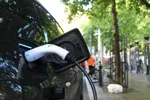By Mike Hind and Philip Nothard, CAP
One of the most striking features of the current used car trade market is the increased appetite for used stock in the open market among franchise dealers.
Fuelled by the dire state of a new car retail market that simply is not generating sufficient part-exchange vehicles, franchised dealers are out in force at auction.
Independent used car dealers are therefore finding themselves in a classic squeeze.
Forced, as ever, to compete on price in a climate of low consumer confidence they are now having to pay more in the trade to keep their forecourts stocked.
And it is not simply a case of franchised dealers casting the net wider for the type of vehicles they would always retail.
These main dealers are increasingly diversifying into different used car brands and ages.
This has led to an almost universal cry of stock shortage from both franchisd and independent dealers who are reporting anything up to 40% fewer cars in stock than they would normally be holding.
As is so often the case in the motor trade, however, the truth is not quite as simple as a basic shortage of cars in the open market.
The situation is more accurately described as a buyer surplus.
Another way of classifying it might be an absence of the over supply to which our market has grown so accustomed.
So, while it may be true that there are fewer examples of many vehicles available, there are actually a lot more trade buyers chasing stock – which is preventing them from driving values down in the way they would like.
This situation has certainly been taking its toll on independent dealer confidence since the problem really kicked in toward the end of last year.
Dealer fortunes
This is clearly illustrated by CAP’s surveys of dealer fortunes.
Back in late summer 2011 34% of independents were expecting business to improve over the coming quarter, compared with just 17% of franchised dealer used car departments.
But by winter the situation had reversed, with franchised dealers much more bullish than independents.
With the squeeze on stock and margins starting to be felt more keenly than ever, the proportion of independents feeling confident of improvement over the next three months was starting to slip.
Moving into 2012 the independents were far gloomier in their outlook, with just 15% feeling good about their prospects.
In contrast, 32% of franchised dealers were expecting business to keep improving.
The answer to why this might be is revealed by the data on stock levels.
The proportion of independents saying their own stock levels were ‘too low’ before last Christmas was 65%, but this had risen in the early weeks of 2012 to 72%.
Franchised dealers have also been reporting growing gaps in their stock over the same period, but to nowhere near the same degree.
But this does not mean that the independent is at a complete disadvantage.
Indeed, they are free from some of the pressures that can weigh heavily on their franchised counterparts.















Login to comment
Comments
No comments have been made yet.